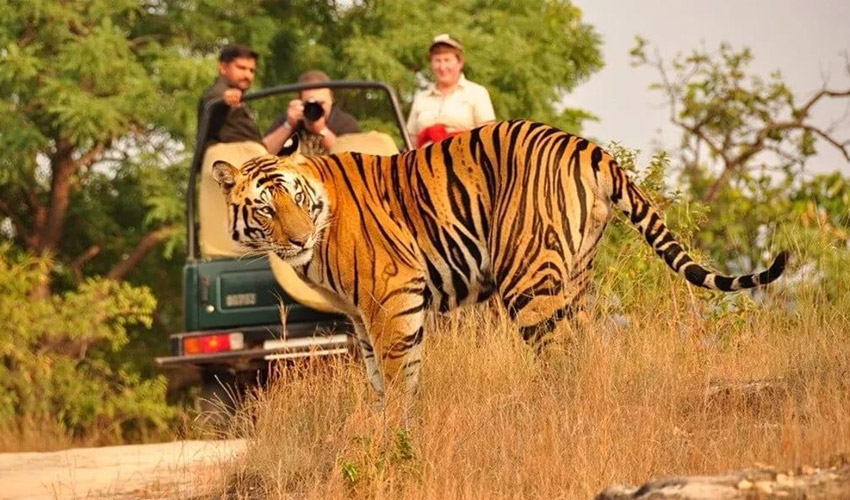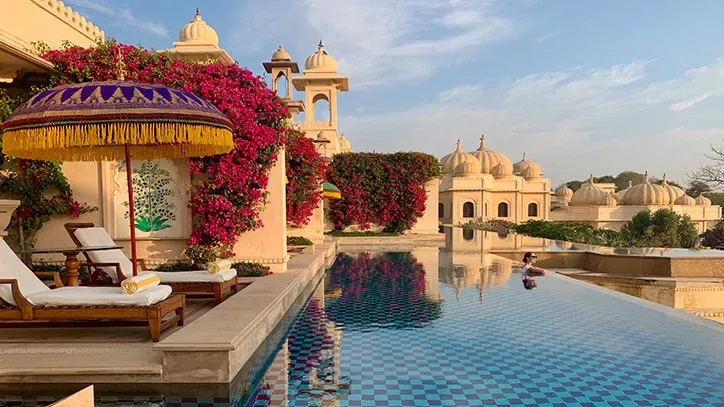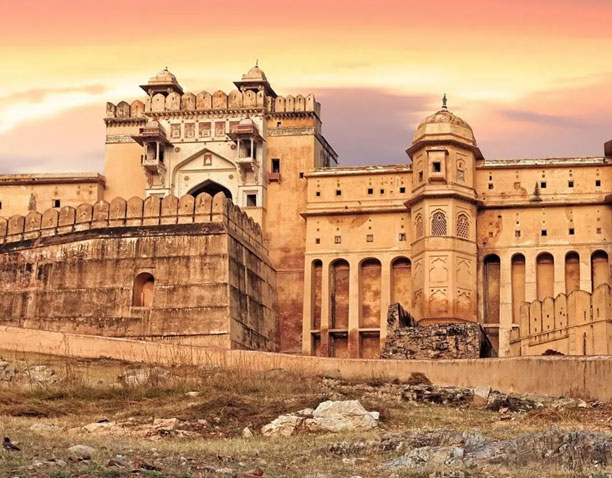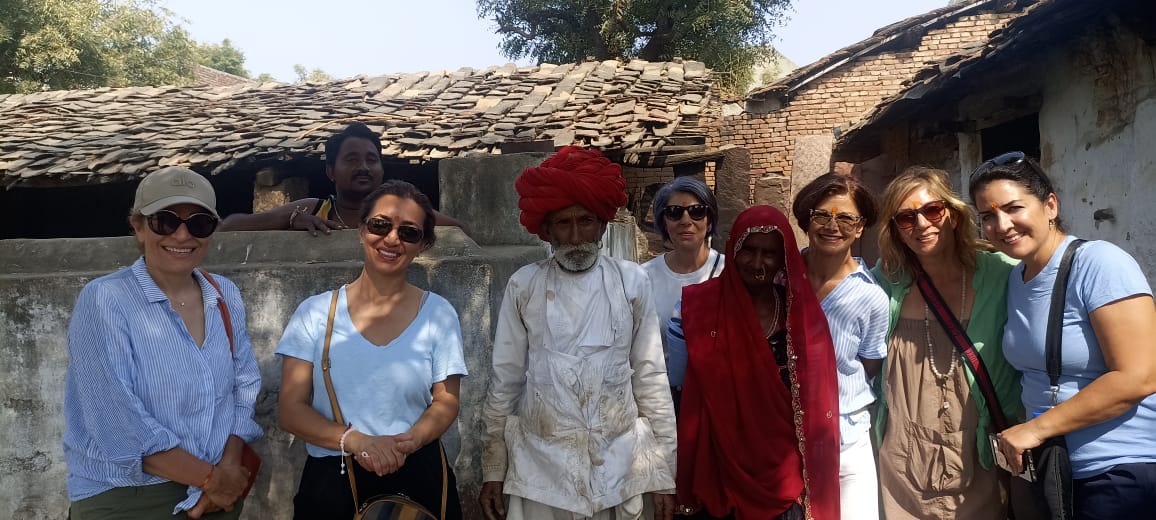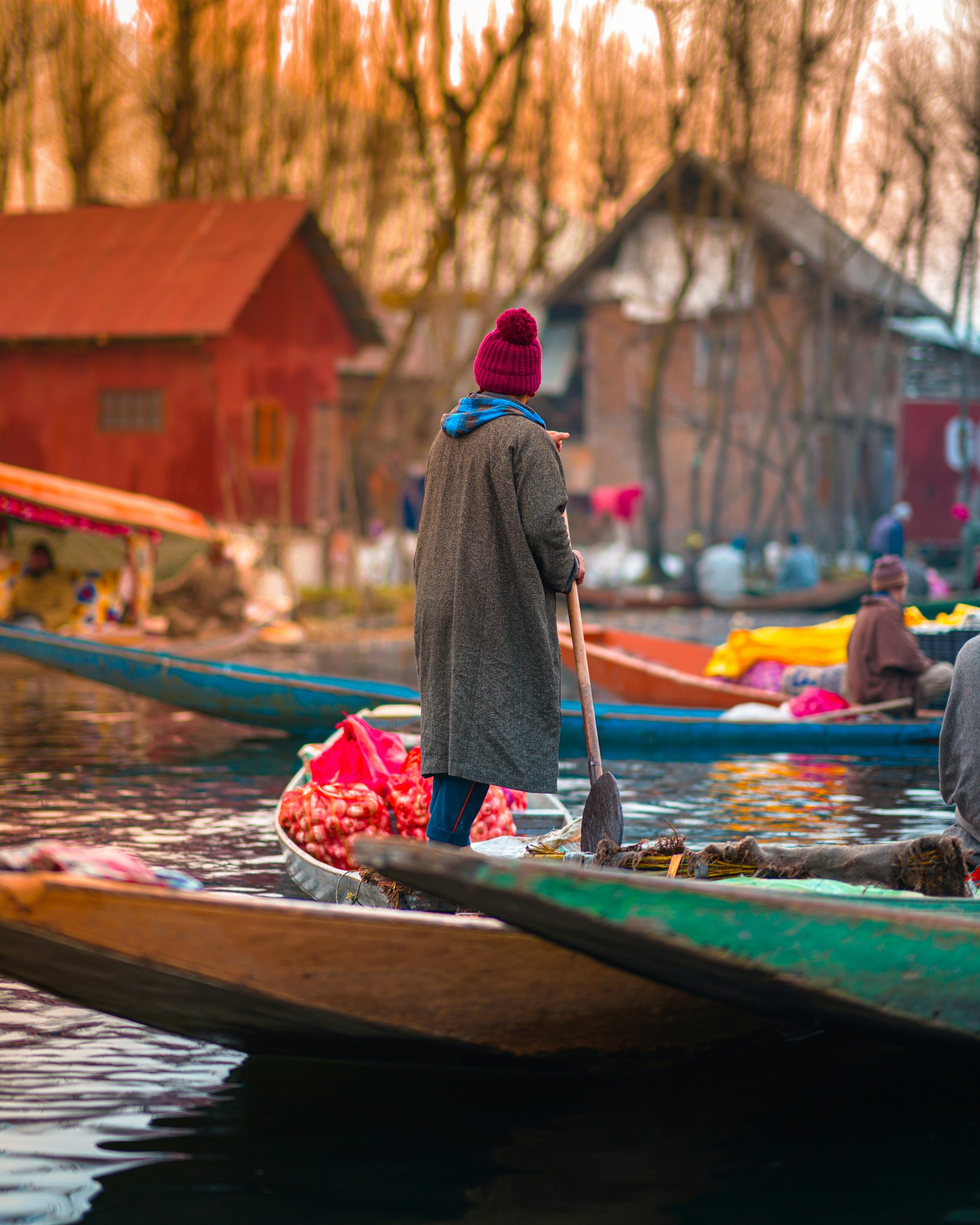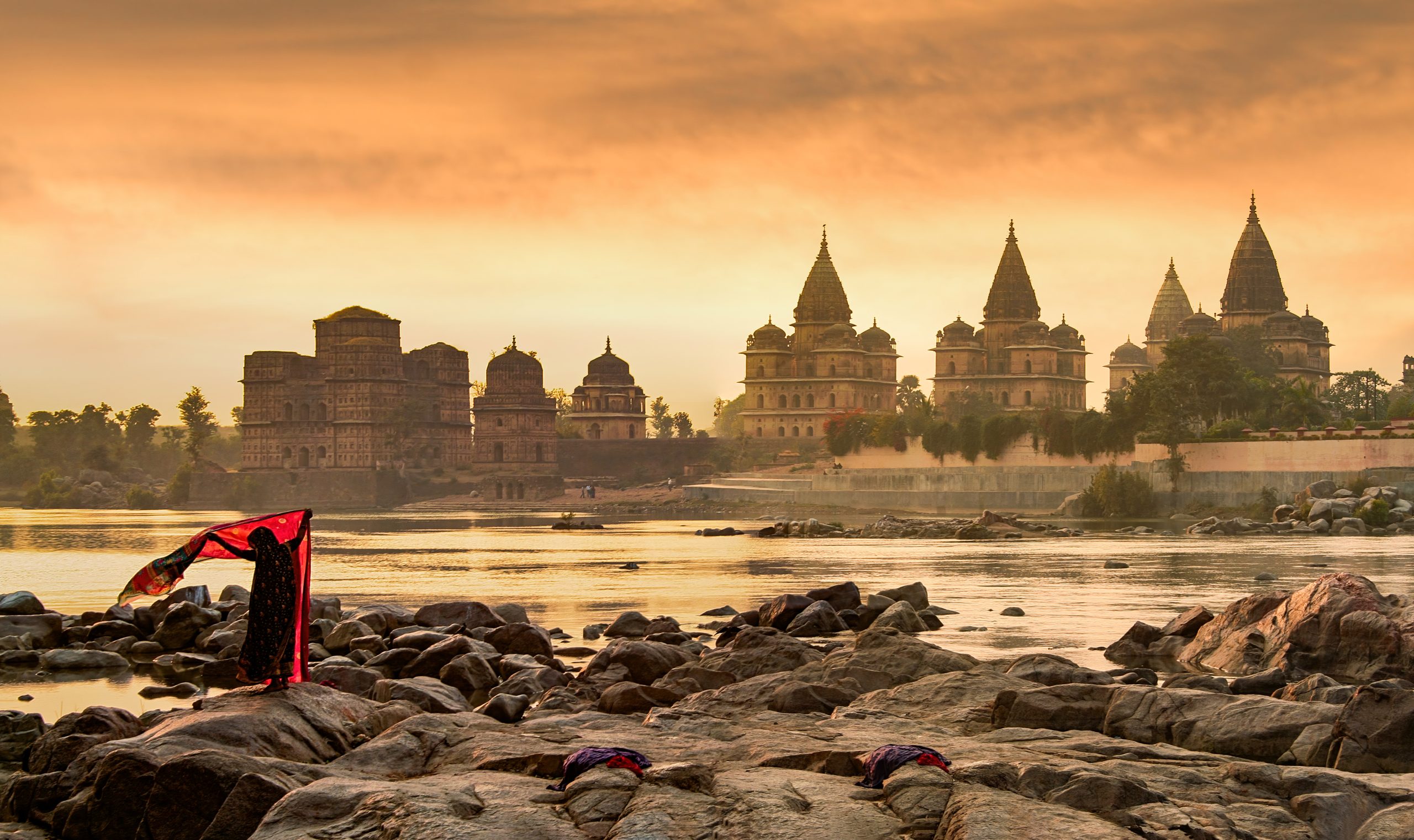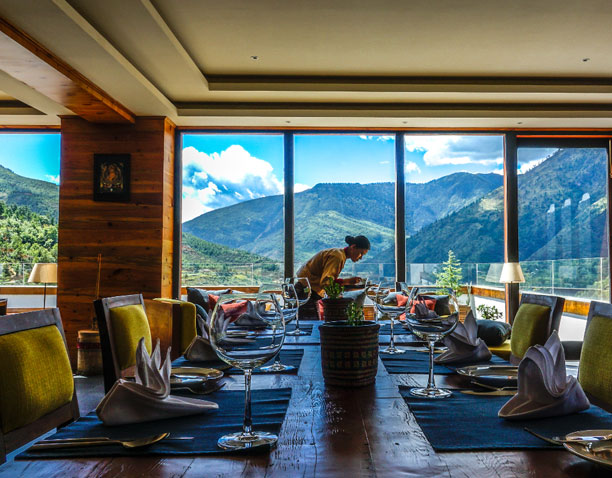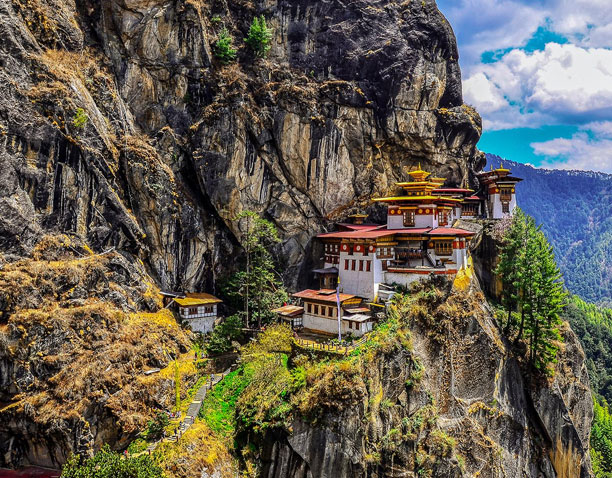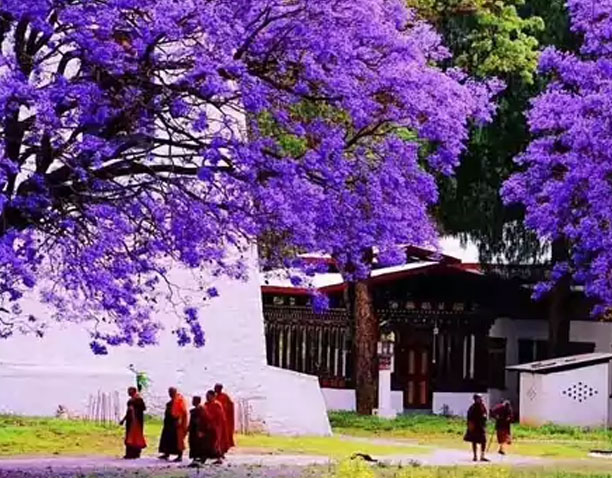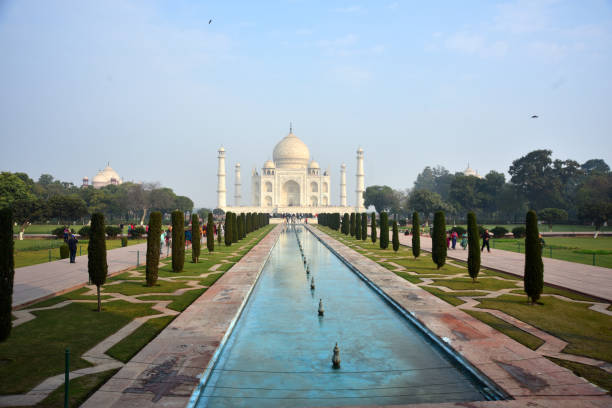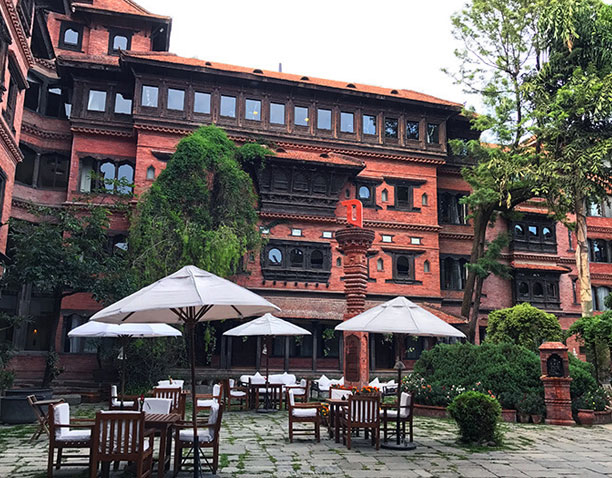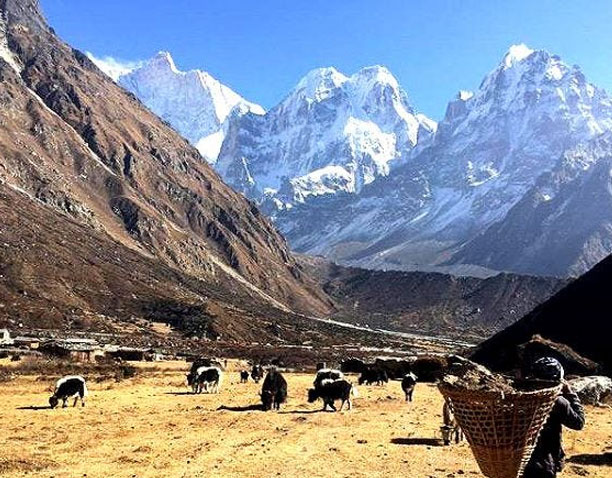An image of a safari can be seen in the picture, with a vast horizon stretching out as far as the eye can see. The clear blue sky is spotted with white clouds, while the land is filled with a variety of trees and bushes. A glimpse of wildlife can be seen in the distance, adding to the scenery’s beauty.
When I was young, I had a longing to experience the vast and untamed woods of Pench National Park, the same place where Mowgli used to leap from one tree to another accompanied by his own troop. I wished to be part of a faithful and attentive circle of friends like Bagheera and Baloo.
When I was a child, I would always make sure to finish my work in the evening so I wouldn’t miss Mowgli’s adventures on television. This character was a pathway for us to enter the unknown jungles. Even the thought of leading a troop of wolves, like the Seonee Pack, would fill me with enthusiasm.
My recollection of The Jungle Book, as with numerous Indian children, goes back to the ’90s when it was broadcast on Sahara One Channel and Doordarshan. As I recall the dreams of wildness, presented to us by Mowgli, I would scarcely contain my anticipation to investigate the woodland where the beloved characters of my childhood come to life.
The Pench Tiger Reserve in Central India is a dense deciduous forest that brings back memories of the childhood classic The Jungle Book by Rudyard Kipling. It is renowned as the inspiration behind the book and one of the most prominent national parks in the region. As one travels through the forest of teak, Mahua, and bamboo, the world of fantasy and nostalgia from The Jungle Book is revived and made into the reality of the present.
Kipling’s classic, The Jungle Book, was inspired by the wildlife of Seoni Jungle, present-day Pench. He transformed the streams and rivulets of the forest into characters of his imagination, even though he never visited the jungle of Seoni or Kanha. It is thought that he was in contact with British Officers from the area nonetheless.
Remember the recollections of Mowgli and Shere Khan
After a few hours of exploring Pench’s wild jungle, one might be reminded of their childhood when they would eagerly watch the television show, “Jungle Jungle Pata Chala.” The story of Mowgli and the other creatures he encountered while living with the wolves was a beloved tale for many Indian children. Pench’s forests have the same mesmerising effect on wildlife lovers that it once had on Rudyard Kipling.
Mowgli, the man-cub from the Seonee jungle, has been immortalised through many adaptations of the book, including movies, television series, and other forms of media. For me and many others, these renditions have provided a vivid and captivating view of the riches of the wildlife in that area.
The Jungle Book, written by Rudyard Kipling in 1894, is widely credited for introducing the public to wildlife. At the present-day Pench National Park, the characters from Kipling’s book are still living in their natural habitat. It is widely believed that Mowgli, the protagonist of the book, was inspired by a wolf cub that was captured in Seoni in 1831. This is supported by Sir William Henry Sleeman’s pamphlet, entitled ‘An Account of Wolves Nurturing Children in Their Dens’, which describes a wolf-boy that was taken in the Seoni district near the village of Sant Baori during the same year.
The character of Sher Khan, the antagonist, was inspired by the Royal Bengal Tiger, and Baloo, the bear is based on the sloth bear commonly seen in the Pench National Park. With the exception of Bagheera, most of the wildlife in Kipling’s book can be found in the Pench National Park. Unfortunately, the Black Panther, which we know as Bagheera, is not present in the park currently.
Explore Sher Khan’s Region Again
The Waingunga river, which was previously the domain of Sher Khan, now runs through Pench and Kanha National Parks. It is in these forests that one can experience the story of Mowgli, with the animals on the Seonee Hills and Waingunaga river resembling the characters from the tale.
The Seoni Hills, which is also known as the Council Rock, is still standing in the forest. This spot is where decisions about the Jungles were made in the book. The ravine of the Wainganga River, where Shere Khan was killed by the Mancub Mowgli, is near another place mentioned by Kipling, named Kanhiwara. This ravine is mentioned in many writings of British authors and naturalists, including Robert Strendale. The Wainganga River gorge is now known as the Pench Kanha Corridor, as it winds through both parks. It’s believed that the descendants of Shere Khan, which are the Royal Bengal Tigers, can still be found prowling in the ravines of the Waingunga.
Modern Pench National Park
At the present time, Pench National Park is still a popular destination. It is well-known for its conservation of various species of plants and animals. Visitors can enjoy the breathtaking scenery and take part in exciting activities such as safaris and bird watching. The park also provides educational opportunities for those interested in learning more about the environment. With its stunning views and diverse wildlife, Pench National Park is a unique and unforgettable experience.
The Jungle Book, written by Kipling, had its setting inspired by the forest of Seonee, which was located in what is now the Pench and Kanha National Park, but during the time of the book’s creation, a national park was yet to exist. Kipling made frequent references to this area of Seonee.
In 1975, the location of Mowgli and his Seonee Pack’s wanderings was officially named Pench National Park. Its designation as a Tiger Reserve came in 1992 and it covers an expanse of 1200 sq. kilometers. It is situated between two states, Madhya Pradesh and Maharashtra.
Kipling’s work is mirrored in the undulating landscape, tranquil waterscapes, and abundant wildlife of the national park, where roughly 50 tigers reside.
Wildlife lovers come to Pench National Park every season to observe the majestic wildlife. While visitors are often looking for tigers, the Park is also home to animals like Baloo, Akela, and Sher Khan that were featured in The Jungle Book. Additionally, the Park provides a habitat for wolves, which were depicted as Mowgli’s family in the popular story.
The memories of the iconic title track from The Jungle Book still bring a nostalgic joy to me, yet I am also curious to discover the untold stories of the forest and the diverse characters of its small creatures.

